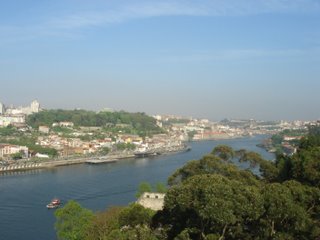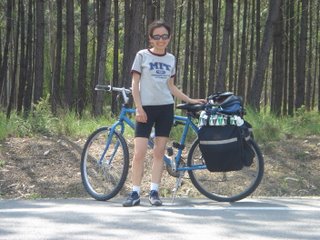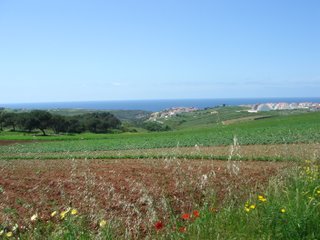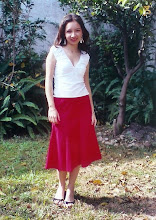
Porto, Day 3.
The imperative Port wine post.
I had been teasing you before, by postponing it as long as possible, also because, not being much of a wine person, and these thoughts being just my very naive impressions, without the requisite conoisseur vocabulary and florid language, well, I was a bit shy to make them public. But, at the same time, as I've said before
elsewhere, sometimes you just have to put your thoughts down otherwise it feels like your head is going to burst, at best, or they quickly dissolve with the passage of time never to be recollected again. As Conan Doyle once said in the words of
Sherlock Holmes (paraphrased here): "The mind is not an ever-expanding room which you can perpetually furnish with dust-collecting facts", and ephemeral impressions, in my particular case, and once written down, one can rest assured they are well kept for future reference and one can then further concentrate on other things in a more orderly fashion.
So, if you know all about Port, and I'm just preaching to the choir here, feel free to skip the post. These are mostly just my notes from the past 3 day's afternoon strolls across the bridge to the other side of the river, set to cyber-ink and paper before I forget them a few months from now when my thoughts get preoccupied with other matters.
So...
There are 3 main types of Port wine: whites, made from white grape varieties like Viozinho, Rabigato, and Arinto, and ruby and tawny, made from red grape varieties most notably Touriga Nacional (said to be dense and concentrated), Touriga Francesa (said to be fruity and full bodied), Tinta Roriz (said to be firm and delicate), Tinta Cão (classic, reliable, and one of the oldest grown in the Douro Valley), and Tinta Barroca (rich and fragrant. I say "said to be" because I have not had occasion to taste the actual grapes myself, so I cannot directly comment. Still, this gives you an idea, more or less). There are of course a lot more varieties growing in the Douro Valley that are used as well, but these are, it is said, among the best, and therefore most commonly used, or, more properly speaking (since "common" has such a pedestrian ring to it), most often used and sought for. ( ;) For you wine snobs, that a bit better?).
Now, out of the white Ports, there are several types ranging from dry to medium dry to sweet, also known as Lágrima (which, trivia fact, by the way, has around 136 grams of sugar per liter!). These are typically served chilled as aperitifs and have a very fruity taste sometimes with a hint of lemon. They tend to get darker-hued as they age, progressing from golden to dark amber.
The rubies are different from the tawnies in the way they are aged: Ruby wines are aged in large twenty-thousand liter oak vats for between 3-6 or so years, depending. Simple rubies age for around three or so years while Reserve rubies age for 5 years or longer. Since they age for relatively little time with very little opportunity for oxidation (due to the relatively little contact with the wood) they tend to retain the characteristics of a "young" wine, namely, freshness, fruitiness, marked taste of "black fruits" (i.e. cherries, raspberry, currants, plums, etc). These go especially well with chocolate and black fruit-based dessert.
Tawny port ages in smaller oak casks, which with the more surface contact with the wood obtain a more "nutty", and, as they age, a rather liqueur-like flavor as well. These are served typically as after-dinner drinks with dried fruits and, clearly, nuts, or on their own. Most producers offer several varieties of Tawny, depending on the average age in the oak barrels, typically 10, 20, 30, and 40 years. Red grape ports get clearer as they age and therefore in contrast with the deep cerise color of ruby ports they tend to be more amber-hued and transparent.
Now, there is also a particular kind of Port called the Vintage Port. This Port is always from the harvest of a single year and never a blend. These Ports, too, are typically treaded by foot in wide stone fermentation tanks called
lagares which is laborious and costly. A Vintage Port, too, is produced only in years where the grape harvest produce was exceptional, and certain conditions need to be met before an official body can declare that particular harvest a Vintage year harvest. So, not only are these ports rather rare, but they also are aged in the bottle, and are the stuff all of those great Victorian stories are made of: namely, they keep basically forever (I saw one at the Sandeman cellars from the year 1908!), need to be decanted (for they form sediment as they age in the bottle), and can fetch for thousands of dollars at auction if particularly old.
Nah, I haven't had occasion to taste one, even though they do say that 1975 was a nice Vintage year. But, tradition says you drink the Vintage of the year of your birth when you reach the winter of your life. So I have long enough to save up some money yet, I hope. ;)
There is another kind, which is a bit like a compromise between a normal Ruby and a Vintage, and that is the Late Bottled Vintage. These are vintage ports aged for a couple of years in the barrel, and then in the cask/bottle for another 4-6 years. This wine is ready to drink, needs not be decanted, and if I remember correctly doesn't quite keep as well for as long.
Now, Port wine is a fortified wine, the reason it tastes so sweet. Back in 1703 when the British signed the Methuen Treaty which lowered the duties of Portuguese wine relative to those of France (with whom they were rather unfriendly at time), thus becoming the number one Portuguese wine market (and Adam Smith has a lot to say about these kinds of trade policies in his
Wealth of..., by the way, going as far as using the Portuguese wine trade as an example...but I digress). The problem was that the wines did not travel well in the short trip across the sea, so the traders added brandy to them to prevent them from spoiling. Nowadays, pure grape spirit (
aguardente) is used (colorless, and regulated to something like 77% alcohol content), and what this basically does is that it cuts short the fermentation process such that most of the natural grape sugar remains in the wine.
The Douro Valley, which is about 150 km east from the city of Porto (and unfortunately too far for me to bike through there, since it looks spectacularly beautiful from the pictures!), was the first ever officially demarcated wine region, by the Marquis de Pombal, back in 1756. It consists of the 3 regions: Alto Douro, where most of the Port wine grapes come from, Middle Douro, and Lower Douro. Two things make the Douro region unique: first of all, the mountainous terrain of the Marão, which protects the grapes from the winds of the Atlantic, and makes it very cold in winter and baking hot in the summer, with a variety of micro-climates along the region, and the type of soil, which is full of a rock called
xisto (schist, I believe, in English), which is very hard to break and often requires dynamite to do so. On this rocky and mountainous terrain, the Portuguese wine producers build little terraces, some according to old tradition, following the contours of the mountains, and more modern versions running in rows perpendicular to the hillside, along the gradients. Because the soil is so rocky, this requires the vines to put forth long and strong roots in search for water, which somehow also contribute to the unique quality of the grapes produced.
Anyway, after listening to the little story/tour outlining the above for three or four times, you end up remembering it. That's why I wrote it up for you above. After the tours, you get to do some wine-tasting, as I've hinted before. If you are a complete newbie, like me, the first few tastings are spent training your senses and memory to distinguish between the types of Port mentioned above (but in a simplified way: just whites vs ruby vs tawny, and the occasional LBV or reserve). This doesn't take too long, however, and by the second or third tasting you're easily able to tell which kind of Port it is even without looking at it.
Here's where it gets interesting. After you can easily distinguish the types, you suddenly start noticing slight variations in the same type of Port between different wine producers. Perhaps one of them here produces a wine that is rather "flat", or homogeneous. That is, the wine tastes of "one thing", not necessarily only one flavor, for it could be a mix of things: maybe apricot as well as cherry or whatever but the point is that the flavor, blend or not blend tastes the same throughout the time it takes for the wine to first touch your lips to the time it leaves your mouth. There is no "group delay", between the different component flavors, so to speak (for those of you engineering types), they all arrive at the same time and stay at the same time, the "taste vs time" function is a constant, and if you could somehow take the Fourier Transform of the taste in time, with the frequency axis becoming a "taste frequency" (
a la "spatial frequency" of the 2D Fourier Transform, where "frequency" has nothing at all to do with number of periodic oscillations per second), it would be an impulse centered at the "predominant taste", or if not an impulse, at least a very narrowband spectrum. Does this make sense? To give you another example, ever tried the "tutti-frutti" juice flavor? How it is a blend of several fruits but in general when bottled up by a major juice company it no longer tastes of the individual fruits that make up the juice but tastes instead of an undefined, "new" flavor that is called "tutti-frutti" but as to what exactly the components are it is hard to tell if the blend is made such that not one taste predominates: you can tell a few components, maybe even all, but it doesn´t taste of any one of them at any given time, it simply tastes of "the blend". That, to me, is a "flat" wine. It is also, to me, rather boring.
The nicer wines, the ones more interesting, the ones I call more "complex" (but I don't know if this is what other people refer to as "complex", perhaps a knowledgeable person can comment here later...), have a nice "group delay". They taste different the instant the liquid touches your tongue, then some other taste or impression takes over, and then at the end it is something else, still, perhaps a spyciness, and it is cool sometimes to distinguish, between one winery and the next, whether the spyciness is from something like cinnamon, for instance, or pepper instead, one biting but sweet, another piquant and warm. Have you ever looked at a Van Gogh painting up close? His brush strokes are never only one color. If you look carefully, and you have to be standing very close to the painting to be able to appreciate this (and it has to be an original, of course, a poster or a photograph won't show this), you will notice that his brushstrokes look like the brush was holding at least 3 different colors. The blue you see, yes, it is blue, but it has white and yellow edges. Van Gogh saturates the brush with paint, so that when the brush strikes the canvas the predominant color (the blue, let's say), is in bass relief, the edges, white and yellow, very narrow strips of, stand at about a millimeter or two above the canvas, deliniating the stroke. And when he puts another brushstroke right beside it, the delineations do not blend into one another, they stand there still. But you need to be close, pay careful attention, to notice this (from afar, it will simply look like a blue brushstroke). Such too, a fine wine, I think.
The wineries. As I had occasion to visit the cellars of several over the course of 3 afternoons, I soon began to notice, not just the difference in tastes between the same kind of wines executed by a different producer (a Mozart--a simple, straight forward composition---played here by Von Karajan---flat!, another here played by the Academy of St. Martin in the Fields--complex!), but eventually, too, a common denominator between the varieties of wine within the same producer. Thus, Sandeman, high alcohol taste, which tends to overpower the more fundamental flavor of the wine not just towards the end, but as early as the middle...not fun, in my opinion. Or Quinta do Noval, nice, but not too complex. Fonseca, reliable, the type of Port I would keep at home for the occasional guest, in the words of a friend, "to be trusted", indeed, but not extraordinary, I found. Ramos Pinto....
Ah, slight digression on Ramos Pinto, because this producer is a very interesting study in marketing. Ramos Pinto came rather late to market, founding the company in 1880, a good 150-200 years later than some of the other, more established companies. What this effected was that Adriano Ramos Pinto (the 21 year old founder!) had to come up with some really innovative ways to sell his Port wine, and he did this very intelligently in two ways: 1. He concentrated first on exporting to Brazil, a still relatively new market, and 2. Once he was established as the leading Port producer consumed in Brazil he followed with an aggressive, controversial advertising campaign quite successfully back in Europe, engaging the most renowned artists of the time to design his posters and bottle labels, as well as marketing/promotional gifts, which were of very fine class and soon became collector's items (combs, accoutrements for women, fountain pens, cigar accessories for men, etc). You may recognize them because some of them have become classics of Art Nouveau (see pic above), and he always made sure that all of his advertisements and labels were quite a bit controversial for the time (see for instance,
this one, which is rather tame by modern standards).
Anyway, Ramos Pinto, for all the "artistic" atmosphere of his marketing, I found his wines of a rather "masculine" aroma, with hints of raw tobacco and cedarwood, and clearly more of a liqueur than wine.
Taylor's is also an interesting producer of note: Taylor, Fladgate and Yeatman is probably one of the oldest Port producers, founded in 1692, and to this day still family owned, never sold or taken over. Their Ports are very nuanced, subtle, and delicate, "feminine", if you will, almost at the opposite end of the spectrum of Ramos Pinto, character/personality-wise (and I find them difficult to appreciate in a noisy room or where there are a lot of visual distractions...I miss a lot of things with these wines that way). There are some who say that you haven't lived if you have never sipped a glass of Taylor's 40 year aged Tawny with the sun setting behind the banks of the Douro and gazing onto Porto (
Eu tenho setenta anhos. Eu sei o que eu digo...).
And this evening looking down the river in Vila Nova da Gaia, exhaling a sigh of contentment as the last drops of liquid caramel that follow a wonderful meal faded away with the dying rays of sunlight, perfectly free, unperturbed and unafraid of the thought of the ephemeral and solitary nature of this kind of happiness, I couldn't help but agree.






